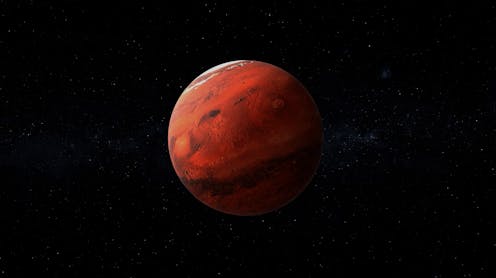
JUNE 15, 2024 BY MARK THOMPSON
Collected at: https://www.universetoday.com/167408/fish-could-turn-regolith-into-fertile-soil-on-mars/
What a wonderful arguably simple solution. Here’s the problem, we travel to Mars but how do we feed ourselves? Sure we can take a load of food with us but for the return trip that’s a lot. If we plan to colonise the red planet we need even more. We have to grow or somehow create food while we are there. The solution is an already wonderfully simple ‘biosphere’ style system; a fish tank! New research suggests fish could be raised in an aquatic system and nutrient rich water can fertilise and grow plants in the regolith! A recent simulation showed vegetables could be grown in regolith fertilised by the fish tank water!
In the next few decades we may well see human beings colonise Mars. The red planet is 54.6 million km away which, even on board a rocket, takes about 7 months to get there! Future colonists could simply have supply ships drop all they need but that becomes ridiculously expensive to sustain and frankly, isn’t sustainable. The lucky people that colonise Mars will just have to find some way to grow what they need.
If you have watched ‘The Martian’ movie with Matt Damon you will know how unforgiving the Martian environment is. Ok the film was a little out on scientific accuracy in places but it certainly showed how inhospitable it really is there. Matt managed to cultivate a decent crop of potatoes in Martian regolith fertilised in human faeces.This may not be quite so practical in real life and there may be alternative, less smelly – and dangerous – alternatives.

Taking the assumption that colonists will have to grow fresh produce locally, a team of researchers decided to explore how feasible this might be. On first glance, it may seem not too great an idea after all, the atmosphere is toxic with 95% carbon dioxide (compared to just 0.04% on Earth). There is a similar length of day on Mars but being able to grow crops will require longer periods of lighting. It is possible at least water may be collected from the ice which forms on and in the Martian rocks. The rocks most certainly have water stored away but organic compounds that we know of.
The team wanted to see how fish could help and whether the water from the system could be used to impart nutrients into the Martian regolith. To test the idea, they setup an aquaponic system with fish in tanks to generate the nutrient rich liquid.
The results were very promising. They found that aquaponic systems not only facilitate growing plants within the system itself but the nutrient rich water performed as an excellent fertiliser. This took the organically deficient regolith and turned it into something akin to useable soil. The fish used in the study were tilapia (Oreochromis niloticus) and using them, the team managed to grow potatoes, tomatoes, beans, carrots and much more. To enable all this to happen, the fish received sufficient light and other environmental stimulus. The plants were grown and indeed thrived in a tent that simulated Mars in every way possible.
It’s an interesting aside that the study not only benefits future space travellers but those inhabitants of more environmentally hostile places on Earth.
Source : Fish and chips on Mars: our research shows how colonists could produce their own food

Leave a Reply